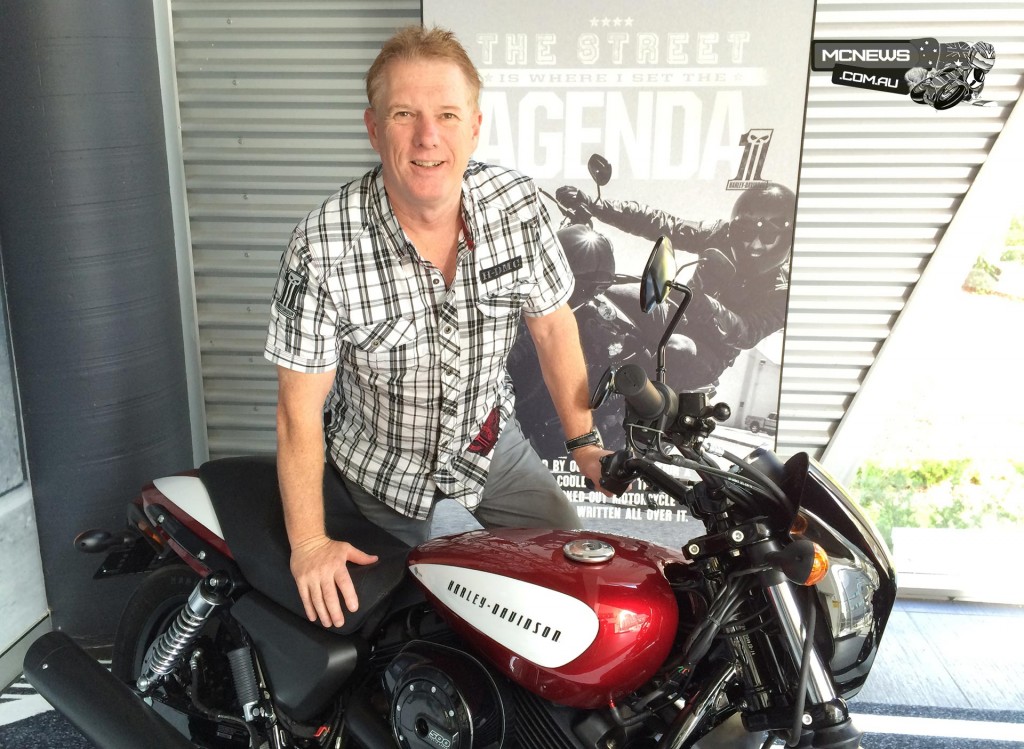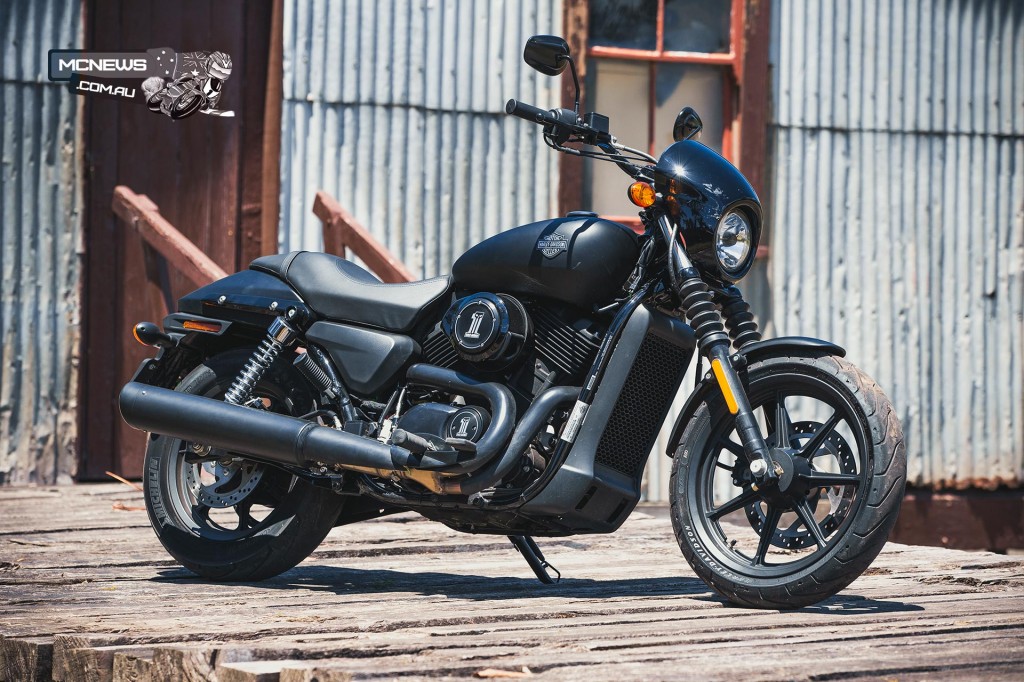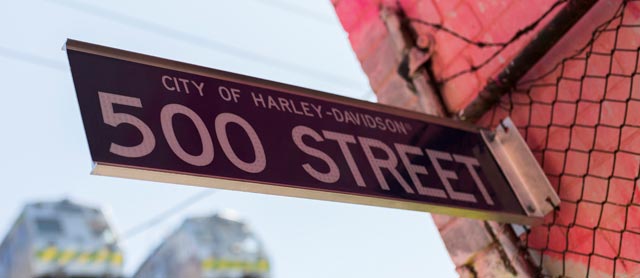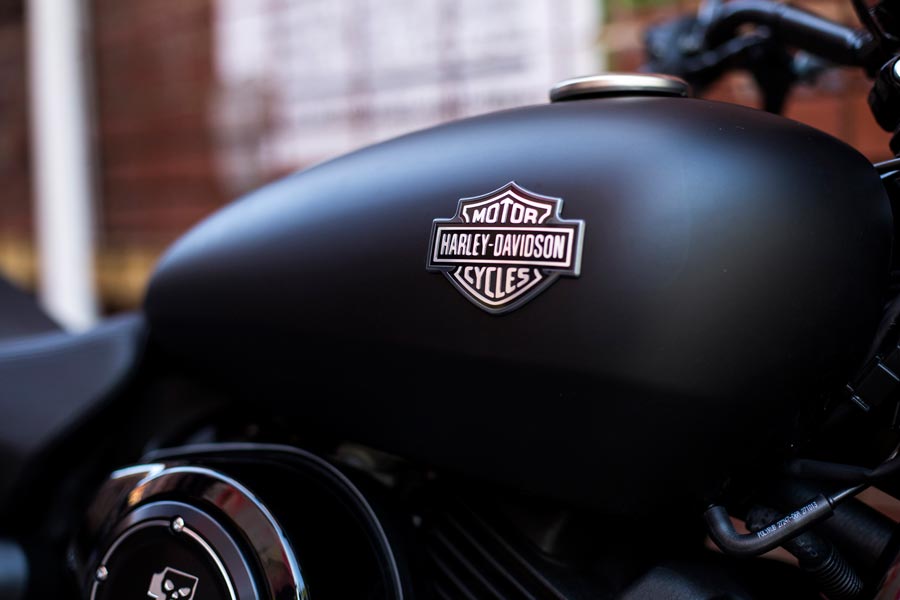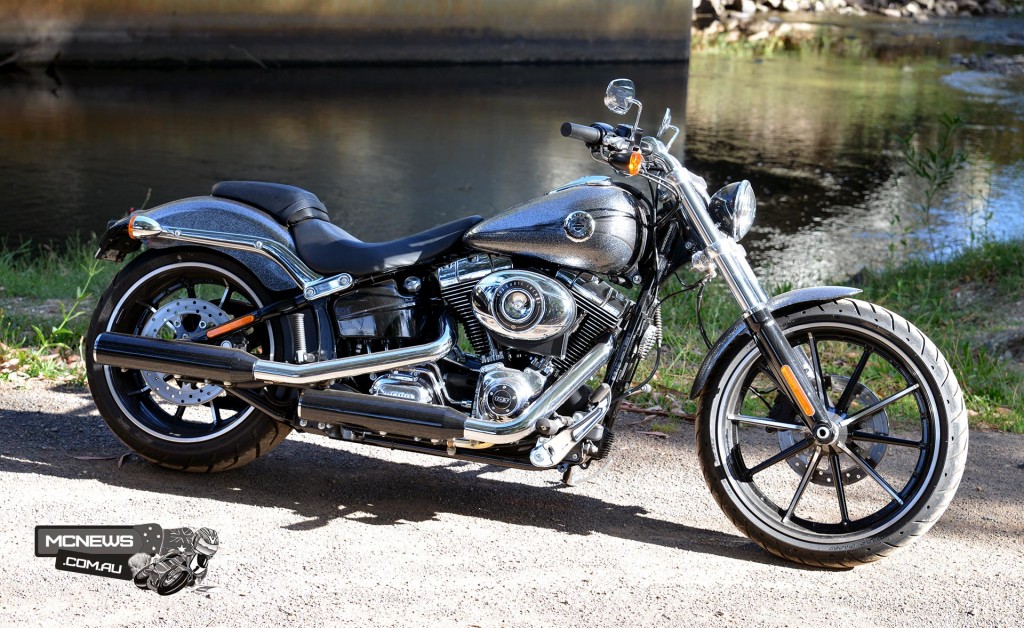Industry insight with Adam Wright – Director of Marketing, Harley-Davidson Australia
Trevor Hedge talks to Adam Wright, Director of Marketing for Harley-Davidson Australia, about Street 500, Project Livewire, other new products in the pipeline and Australia’s unique place in Harley’s global outlook.
Trevor: Thanks for the chat Adam, Harley-Davidson’s new learner legal ‘Street 500’, is the reason we’re here together this week in Melbourne. Displacing 484cc, it is a long way under the 650cc Learner Approved Motorcycle Scheme capacity limit. As I am sure you are aware, some manufacturers, Yamaha in particular, are now actually producing special models for Australia, effectively reducing or upping the capacity of some overseas models, to specifically suit our unique 650cc capacity limit for learners, did you lobby Harley HQ for a 650cc version of street?
Adam: “Product planning, and product development always take on our input as to future products and things like that but we are a global company after all. Ideally, yes, we would like to see a slightly higher capacity motorcycle, but we’re very happy with the Street as it stands today.”
Trevor: How far along are we with Project Livewire?
Adam: “So the exciting thing is that Project LiveWire Experience is going to hit the Asia Pacific region early next year, so we’ll have the opportunity to ride the motorcycle. As we say, we’re a consumer led organisation, so at the moment the whole LiveWire Experience is about getting consumers to ride the product and understand firstly what they like about it, what they don’t like about it, get that feedback, take it back to product planning, product development and then make changes accordingly. So we’re very excited about that product and we see a great future with it.”
Trevor: And how far away are we before we will see a product like that at retail level?
Adam: “That’s a great question. If I had my way, we’d have it here tomorrow, but at the end of the day we’ve got to be realistic, there’s a lot of rapid development happening in battery technologies. We feel that there’s further work to be done before we release to the market. But we’re quite confident that we’ll be able to bring that bike to market in the future at some point in time.”
Trevor: And do you have a six month window when you think that might happen…?
Adam: “I really wish I could say at this point in time, but like I said, we’re getting the feedback at the moment from consumers to understand like I said what they like, what they don’t like about the bike. These things take time, as a brand we’re 111 years old, when we bring a product to market, we want to make sure it’s right, we want to make sure the consumer is happy with it, it’s longevity in the brand and so forth and the product is right for us, so that’s what’s important.”
Trevor: Harley has been virtually unchallenged in the cruiser segment for a long period of time now, but there is a new player with credibility in the market, Indian, which has a huge brand history in itself. Harley seems to have stepped up development a little bit in response to that, is this a response to Indian’s new position in the marketplace?
Adam: “We always welcome competition, it certainly keeps anyone on their toes when there’s a competitor in the marketplace. I’m not sure I totally agree about our previous lack of competitors, there has been a lot of metric cruisers in the marketplace for many years, there’s other brands that are very close to the Harley-Davidson brand from a competitive perspective. It’s an exciting time, there’s no denying that, but our product planning goes out many, many years ahead, so products like Project Rushmore have been in the planning stages for five, six, seven years ahead, Project LiveWire and even the Street, we’re five, six years ahead before we hit the market with these products. So we’ve got a good product line-up coming in the pipeline and we’re very excited about what’s in store for us.”
Trevor: In the last six months the Australian dollar has taken a very significant dive, now I know that you’d lock your pricing in at some point of time far ahead of what is happening in currency markets from month to month, but when is that plunge in the Aussie dollar really going to start to put pressure on the Harley-Davidson prices in Australia?
Adam: “We take a long view of pricing in Australia to be honest. When the dollar dips, like it went down to 50 odd cents back in early 2001 or 2002, there was no major knee jerk reaction to pricing as such. So we do look at our pricing position over say a 10 year period, we try to stabilise pricing as much as we can in the country. And when one foreign exchange area is down, like Australia, there’s somewhere else it’s up in the world, we’re a global company, so we take the hits where we can, and like I said, we try to be as stable as we possibly can with pricing throughout the world.”
Trevor: And throughout 2014 and in recent years, you’ve had fantastic sale success in recent times, if Honda don’t include the bike they sell to Australia Post, you’re the number one selling road bike brand in Australia, and with the introduction of Street I think you’re on track in 2015 to be Australia’s number one selling road bike brand no matter how many bikes Australia Post buys. It’s an incredible record of success, this year, 2014, what’s been the surprise success model for Harley?
Adam: “Well, I wouldn’t call it a surprise, but for us the Harley-Davidson Breakout has been a great model. Aesthetically, it’s a piece of art, people have responded well to that motorcycle and Harley as a brand is very popular, like I said, we’re consumer led, we listen to our customers, we like to build motorcycles that they want, we’re about fulfilling dreams of personal freedom as we say, and that’s very important to us. We stay close to our customers, we all ride the product, we live, eat and breathe it and if we stay close to our customers, understand what they want, we believe that’s the essence to success.”
Trevor: Was there a model in 2014 that you believe perhaps underperformed in the market, and your projected sales were much higher than what it actually achieved?
Adam: “There’s always one or two models that don’t quite hit the performance targets that we really thought would, but then again, after we go out and listen to the customers and we get the feedback and we understand where the changes need to be made, we feed that up to product planning and we make the changes accordingly. So yeah, it’s like any brand, models will come in and out, depending on popularity, no one ever gets it right 100 per cent right, and there’s always those models that will drift off in the product planning over time.“
Trevor: And when you talk about product planning, how much actual input does Milwaukee take from Australia? As I was saying before, through the GFC Harley Australia must have been somewhat of a shining light for the brand, so many markets were so far down but relatively, Australia came through it okay. With that in mind has this given you more influence when dealing with Milwaukee HQ, in regards to them taking your feedback seriously, and then helping to deliver what we want for our market?
Adam: “Yes, definitely, I mean when we look at products like CVOs, we sold more CVO product than pretty much anywhere else in the world, we had a great response to that. And that’s a premium priced product and people were willing to pay for that; we had a lot of input into that product early in the planning, in the product development stages, and we said, ‘This is what the customers are telling us that they want, they want something that’s a little unique, they want something that’s a little premium and stands out from the crowd,’ and they delivered on that. And as a result we saw strong sales in Australia in relation to those products.”
Trevor: So how many CVOs did Harley ship this year roughly?
Adam: “I couldn’t tell you an exact number, I mean they are very limited, so they are exclusive. They’re hand built almost, there are parts that you can’t buy over the counter, they’re special order parts, so not everyone can just order them for their motorcycle and that’s what makes them quite unique and so limited, so appealing to customers out there, because they’ve got something that is very limited, one-off and that not everyone can buy.”
Trevor: Certainly the CVO Road Glide special punched some of my buttons.… But back to Street, with the pricing set at $9995, do you think that’s going to cannibalise Sportster sales in some way, is Sportster pricing going to move in relation to your Street pricing?
Adam: “Great question. First, when street was announced, we were concerned about cannibalisation of Sportster, but what the facts show us, as Street has been released in India for quite some time, as well as the United States, what we’re finding is is that we’re obviously attracting a new customer, a new target audience to that model and we’re actually finding that when they come into the dealerships and seeing what the product’s like, the Iron and the 48 and they go, ‘Oh, wow, I never knew that bike existed!’ So we’ve actually seen an increase in Sportster sales since Street’s come on deck. So that’s a great story for us, we’re seeing the success of Street through India and Europe and the United States, but it is also leading to sales of Sportsters, which is great news just the same.”
Trevor: And as you bring up India, I believe the Streets for America are produced in America, where are our Streets being made.
Adam: “Our Street models are made in India, in Bawal, obviously location is key to us, we’ve got some faster shipment times to Australia, so we can fill the customer demand a little more quickly. For customers, so long as the quality’s there, it’s not an issue. We’ve got US engineers working over there, very high standards within the facility, the manufacturing facility in Bawal in India, so we’re very excited about having that product in Australia.”
Trevor: And is that a joint development industry in India with another large manufacturer or is it wholly Harley owned?
Adam: “So majority Harley owned, but obviously employing a lot of local Indian employees, which is great news for India, puts money into their economy. It’s a massive industry in India. I’m not sure if people understand just how big the market is in India, but to put it into perspective, as a whole Australia sells around 110,000 to 120,000 motorcycles a year, but India sells nearly 800,000 motorcycles per month. So from an Indian standpoint you’ve only got to get a small percentage of that market and you’re selling a lot of motorcycles.”
Trevor: In certain quarters I have heard criticism about the limited amount of Harley dealerships. Are there any more Harley dealers coming online?
Adam: “We’re a mature market here in Australia, and New Zealand which we look after as well; we continually look at our dealers, their location, whether there’s any opportunities within the market. There’s one or two locations that we do see as potential openings, but with nearly 100 years in Australia selling Harley Davidson, we’ve been doing this business a long time in Australia and we’re quite content and quite happy with the locations we have, and our existing dealers. We’re pretty well established on that front.”
Trevor: So what’s next? You’re about to release Street 500, as you said LiveWire is perhaps still a little way away as perhaps we wait for battery technology to develop further, so what have we got coming up? Is there a reinvention of one of the platforms coming soon in the next year, or two years?
Adam: “As a company, we don’t talk about our future products, but what I can say is that we do have some exciting products in the pipeline in the near future so at this stage all I could say Trev is, watch this space…“
